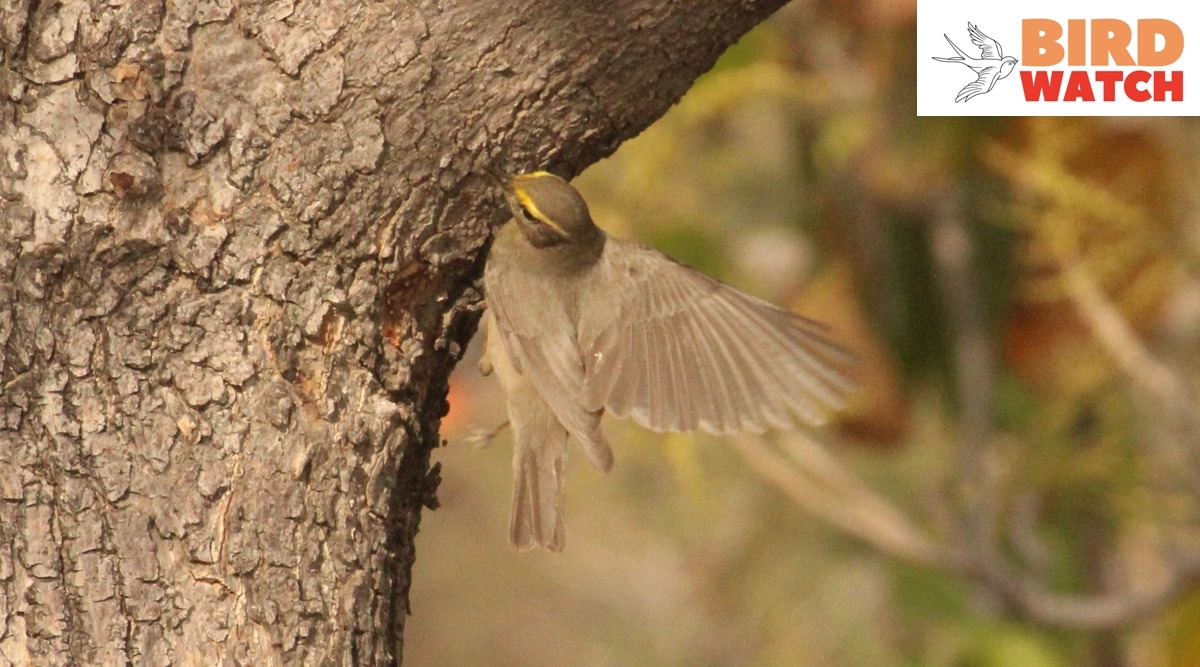 A Sulphur-Bellied Warbler (phylloscopus griseolus)
A Sulphur-Bellied Warbler (phylloscopus griseolus)The Sulphur-Bellied Warbler (phylloscopus griseolus) is a songbird that loves to stay in rocky areas around old buildings, and is often seen creeping on tree trunks, walls or on rocks. The bird is not one to sit calmly for a long time in one place. It stealthily moves from one place to another, usually in order to avoid being noticed. Hence, one should have the patience to observe and capture the Sulphur-Bellied Warbler on camera. Nobody can escape from its sharp, single-note cheep call, a sure sign of this songbird’s presence in the vicinity.
As far as the features go, the male and female are alike. It is 11 cm in size. The main identification marks are brown upperparts, eye stripe, supercilium with front edge orangish-yellow, no wing bars and underparts brownish yellow (dirty yellow). Like other leaf-warblers, it gleans insects from small branches and leaves. Sulphur-Bellied Warblers are found in rocky hills and scrub forest habitats.
The species is found in small groups and has a tendency to forage low in the vegetation, sometimes even hopping on the ground. They have a single-note cheep call.
Though the Sulphur-Bellied Warbler is categorised as a winter visitor, certain areas, especially the foothills in Morni, Chakkimod, Bhojnagar, in Inter-State Chandigarh Region (ISCR) host this bird in the summers too. Its habitat is rocky areas around old buildings.
Best of Express Premium
I was fortunate to counter the Sulphur-Bellied Warbler during both winter and summer. I first observed this species in the Khol-Hi-Raitan wildlife sanctuary nestled in Morni hills in the months of March 2020 and at Chakkimod-Bhojnagar last week when the maximum temperature was more than 41 degrees Celsius. Chakkimod-Bhojnagar area falls in the district Solan of Himachal Pradesh. It is considered a part of ISCR.
Besides Sulphur-Bellied Warbler, there are six other warbler species in ISCR.
- The Indian Express website has been rated GREEN for its credibility and trustworthiness by Newsguard, a global service that rates news sources for their journalistic standards.

